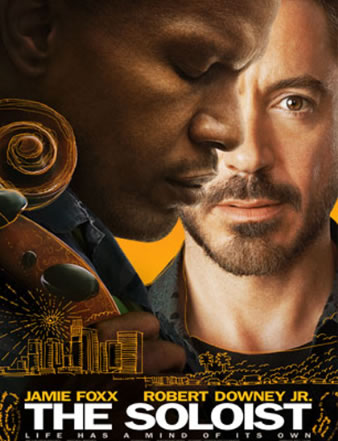
Internet Advertising Winning Formulae
Working as a strategist and designer in theatrical advertising and branding, there’s an approach that’s linked to sequence and revelation of motion picture content that’s showing some proven measure in conventional online advertising.
That is simplicity.
Face.
Message.
Story.
Emotion.
Logo.
While the idea of simplifying the concept of online advertising to considering the promotional messaging for motion picture promotion seems far-fetched, the theory works. That is, for the most part, one sheet — or banner and internet advertising — relies on maximal punch to deliver the message. Tell the story, visually, keep the copy lean, focus on the emotionality of context and deliver the brand — fast — to define the take away and call to action.
Go see this:

In the surging masses of thousands of messages that online readers are connected to, working and exploring online environments, the notion of “hold and creep” forms of sequential advertising are a risk, in terms of desired exposures. According to an online study of advertising, Dynamic Logic, there’s a testing outcome that suggests that it’s less about conventional wisdom of placement alone, SEO relevance and targeted focus; the real winner is the directness of the creative.
The Millward Brown company has outlined, in support of this contention, that creative factors such as “persistent branding, strong calls to action and even human faces — and not super-targeted or high-profile ad placements — make for better ad recall, brand awareness and purchase intent”, according to an overview by AdAge. They also call to the reference of emotionality in the framing of messaging — according to another overview on their site. As they point out:
“The generation of emotion is crucial for successful marketing. Many brands benefit from an association with positive emotions. However, the fact that the most successful brands tend to have a balanced set of associations and rational strengths should not be ignored. Advertising that generates an emotional response has two benefits. Firstly, it can help the emotions transfer to the brand, shaping the brand perceptions. Secondly, it can help generate engagement and memorability. While advertising can generate negative emotions to help create drama, for most brand advertising this needs to ultimately result in a positive emotional takeout.”
Emotional power is about storytelling — brand storytelling — that links a sense of memory to a place in the mind of the consumer; it’s a way of working that focuses on subconscious character that is very much in tune with the narrative way in which we think, explore and examine our lives — and the impact that everything has upon that sequence in experience.
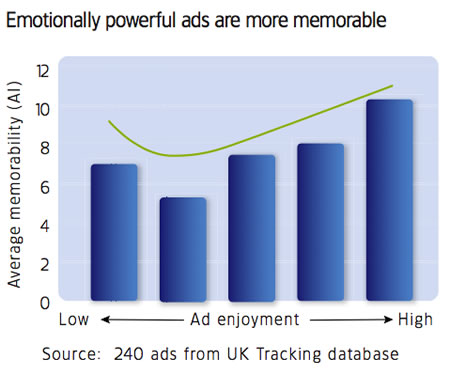
But emotionality aside, it’s crucial that messaging relate to the notion of immediacy of construction — long-winded animations and detached message and conclusion are faltering in the attention of the online reader. The reality of the process is that a typical brand purchasing decision is trivial — in the combination between the sentiments of action and emotion, founded in the momentary gesture of reasoning (relevance).
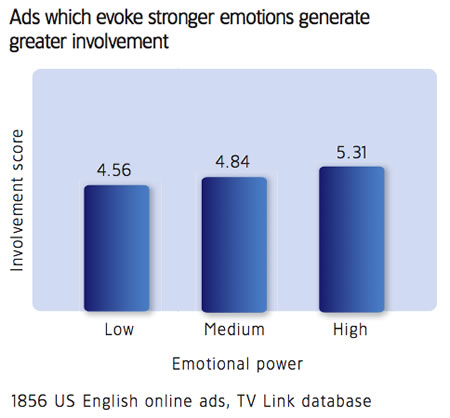
A reader will take the minimal possible time to review any content to make a decision, depending on the category, could be merely seconds in length. That idea of choice will be made based on the memories and associations with the brand (resonance). The construction of advertising — even any layering of messaging relates to the concept of speed of conception and review. Brands, per se, and advertising in general, are not important to people. People are not online for the sake of learning about ads — and so the gesture of exploring the insertion of banner treatments has to offer immediate captivation of story, emotional connectivity and finally — the reasoning for relationship (purchase). It is this narrative — storytelling — sequence about a product that is likely to be retained in the memory. Speed thrills, story drills. There needs to be a balance between the concept of the reasoning of acquisition and the feelings that associated with that discovery.
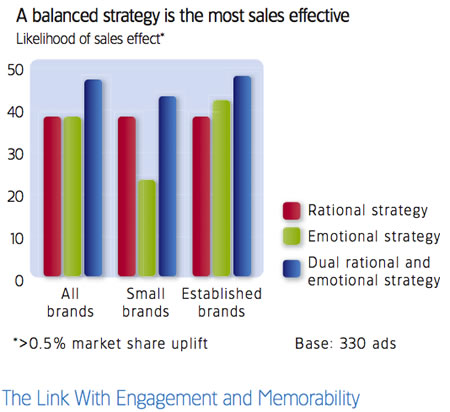
What this comes to is the link — rather, the balance — between what might be defined in the emotional construct of storytelling and the reasoning power of decision and captivation. There has been an assertion that emotion is “unconscious” — and therefore incapable of conscious review — people can’t tell what they’re feeling. Zaltman’s metaphorical elicitation technique suggests that the best modeling is based on imagery sorting and building gathered expressions of brand feeling, rather than trying to write about it. The reality is that while psychologists often disagree on the precise definition of emotion, there is nonetheless wide agreement on the proposition that emotionality can be balanced with subjective assessment — feelings and reasoning are aligned, derivative of each other. Antonio Damasio, a neuro-scientific analyst of this exploration, wrote in “Descartes’ Error”: “I do not see emotions and feelings as the intangible and vaporous qualities that many presume them to be”, and “Feelings are neither intangible nor elusive.” In studying the ad review “journey”, consumers can define a sense of emotional recollection — they either have a place of need, in memory, or they do not.
The real point is about the notion of recognition — the recalling of cognition, the returning to mind states that are about the reach to memory and relevance. That idea of the three points of connection is a realistic framing of process. What’s the relevance — a call to reasoning? Why? What’s the resonance — a whisper to emotionality? What is the relationship — the sound of the concluding outcome and purchase?
The concluding outcomes suggest brevity and power are more crucial to the recognizability of offerings — reasoned or emotional. In most online environments, where banners are only fortunate to get more than a moment’s notice, it’s smart to use a logo — a lot. Ads that leave the brand punchline until the very end — a delayed messaging animation — largely don’t work, so the analyses of the Dynamic Logic report stresses that online ads need to be simple, direct and communicate meaning — as well as the brand — at a glance. The scent of strategy, to this modeling of coherent expression, speaks to theatrical advertising strategy; you’ve only got a moment to tell the story, what’s the magnetic reach to draw the sharpened attention?
Creative is the very seed of this bonding — but in the online environment, it’s one of the most challenging; it’s iterative and can tend to — internal to the agency, and external to the incessant “re-framing” of advertising makes creative innovation a difficult proposition. But, if there are a numerous series of placements, then the idea of simplicity in the speed of accessing information is important. Magnetizing creative | simplicity and power of message | conclusion of brand identity. Final recommendations would be:
Simple. What’s the story, fast?
People relate to people. To the concept of the human brand, reflectivity works — people to|for people. They relate.
Brand hard. Mark the promotion with identity, make clear the derivation. Why and who?
Speed thrills. Every second of review is critical to framing the message. Bring them there with urgency.
Presume momentary attention. Prolonged animation sequences, hoping for a read to the end, are risky.
Charts from Millward Brown testing outcomes. References are linked. Antonio R. Damasio, Descartes’ Error: Emotion, Reason and the Human Brain was published in 1994, reviewed in the Times. An overview, by Damasio, in Time magazine can be found here.
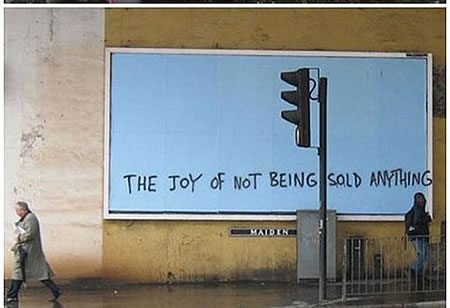
Story – in memory – first, emotion – in vibrance – second, reasoning – in capture, third.
Simple.
tsg
….
Exploring the human brand:
https://www.girvin.com/subsites/humanbrands/
the work: https://www.girvin.com
the truth: http://www.tim.girvin.com/
the reels: http://www.youtube.com/user/GIRVIN888
blogs:
http://blog.girvin.com/
https://tim.girvin.com/index.php
more on GIRVIN:
TED: http://www.ted.com/index.php/profiles/view/id/825
Behance: http://www.behance.net/GIRVIN-Branding
Twitter: http://twitter.com/tgirvin
